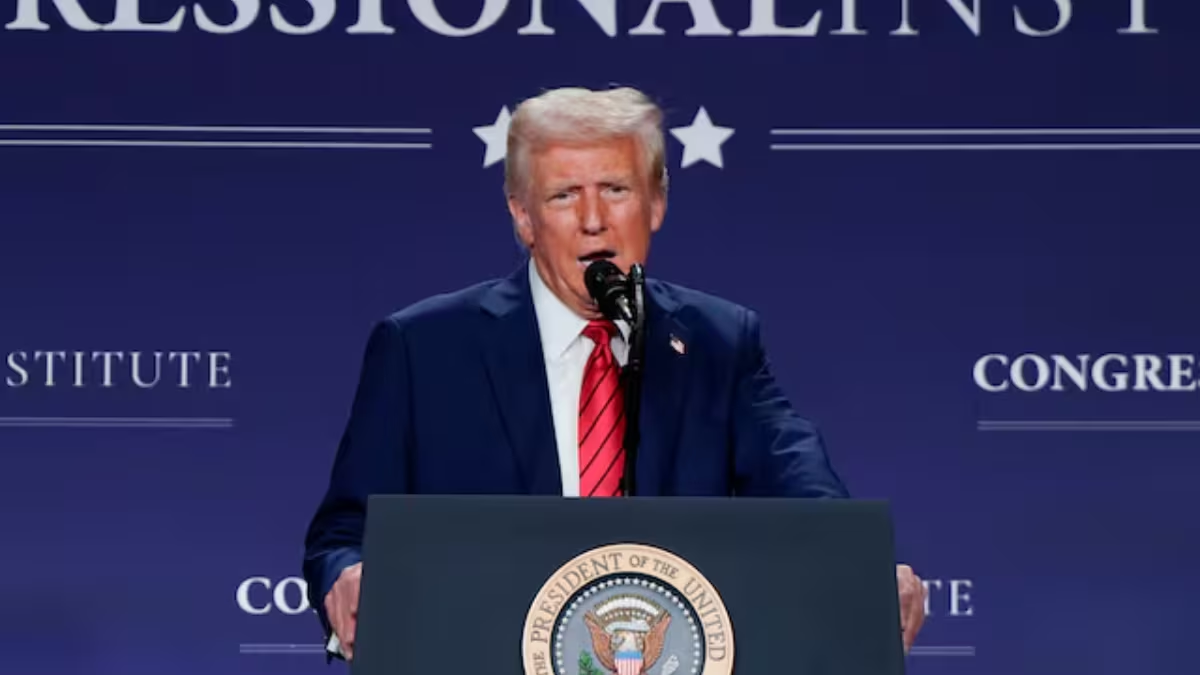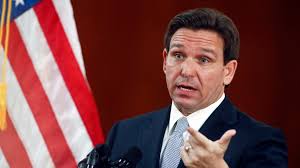The Trump Administration's Move to Eliminate the Department of Education: An In-Depth Look
The idea of eliminating the Department of Education is not a new one, but recently it has become a point of focus under the Trump administration. The administration has started the process of drafting an executive order to dismantle the department, marking a significant shift in the U.S. government’s approach to education policy. While it is clear that President Trump has a long-standing desire to reduce the size and scope of the federal government, this move, if successful, would have far-reaching implications for the nation's educational system.
What the Executive Order Entails
The executive order, currently being drafted, would trigger a series of steps that could ultimately lead to the elimination of the Department of Education. According to sources close to the matter, the plan would unfold in two primary parts. First, the executive order would direct the Secretary of Education to create a roadmap for diminishing the role of the department through executive action. This means that the department could see significant restructuring or a reduction in its responsibilities in the near future. The second part of the plan involves pushing Congress to pass legislation that would formally end the Department of Education. This would require a legislative process and could take some time to accomplish, especially considering the hurdles involved in passing significant reforms through Congress.
Historically, there have been calls to abolish or merge the Department of Education with other federal agencies, but these efforts have failed to gain significant traction in the past. For example, during President Trump’s first term in office, his administration proposed merging the Education and Labor Departments into a single federal entity. Despite the Republican Party having control over both the Senate and the House of Representatives at the time, the proposal never advanced. This shows that even with the support of one political party, significant structural changes to the federal government can be difficult to achieve.
Targeting the Department of Education: A Part of a Larger Effort
In addition to the Trump administration's internal efforts, the Department of Education is also being scrutinized by external forces. The Department of Government Efficiency, headed by high-profile entrepreneur Elon Musk, has also taken aim at the Education Department. This department is part of Musk's broader goal to streamline and cut back on what he perceives as wasteful government spending. As CNN reported, this push has already resulted in significant changes within the Education Department, including placing dozens of employees on paid administrative leave as part of a wider effort to target employees connected to diversity, equity, inclusion, and accessibility programs.
The elimination or restructuring of the Education Department is not just about reducing the number of federal agencies; it is also about addressing what many view as federal overreach in education. President Trump has frequently pointed to the department as a symbol of this overreach, highlighting its role in shaping national education policy, including its influence over K-12 schools and higher education institutions. He has linked the department to various cultural debates, particularly those related to the content taught in schools. Trump has spoken out against the teaching of what he refers to as "indoctrination" in schools, particularly around issues like race, gender, and sexuality. In this context, the Department of Education represents an obstacle to his vision of an education system that is more in line with conservative values.
What Would Happen If the Department of Education Is Eliminated?
One of the key concerns surrounding the potential elimination of the Department of Education is what would happen to the programs and funding that it currently oversees. The department administers several important federal education programs, such as those that provide financial assistance to students from low-income families and those with disabilities. These programs are vital to ensuring that all students have access to quality education, regardless of their background or circumstances. However, many of these funding programs existed before the department was created in 1979, and there is a possibility that they could be transferred to other federal agencies if the Department of Education is dismantled.
For example, federal funding for K-12 schools has long been a source of financial support for public education. Programs like Title I, which provides funding for schools that serve large numbers of students from low-income families, have been a crucial part of the education landscape for decades. Similarly, the Individuals with Disabilities Education Act (IDEA), which ensures that children with disabilities receive a free and appropriate public education, is another program that predates the Department of Education. If the department were eliminated, it is likely that these and similar programs would be absorbed by other federal entities, such as the Department of Health and Human Services or the Department of Labor. However, the transfer of these programs to other agencies could result in a loss of focus or efficiency in administering them.
Challenges to the Elimination of the Department of Education
Despite President Trump’s stated goal of eliminating the Department of Education, there are several obstacles that stand in the way of this initiative. The most significant challenge is that any effort to eliminate the department would require Congressional approval. The executive order, while a significant step, is not enough on its own to dissolve the department. Congress would need to pass legislation to officially end the department, which would be a highly contentious process. Historically, there has been strong resistance to cuts or reductions in funding for education, and many lawmakers are likely to oppose any move that would undermine federal education programs.
Even when previous administrations have proposed cuts to the Department of Education’s budget, Congress has often resisted and allocated more funding than what was initially requested. According to an analysis from the Brookings Institution, Congress has increased funding for the department about 71% of the time when the president has proposed cuts. This indicates that, despite political pressure from the executive branch, lawmakers often prioritize education funding when making decisions about the federal budget.
What’s at Stake for American Students?
The potential elimination of the Department of Education raises important questions about what is at stake for American students, particularly those from disadvantaged backgrounds. The federal government plays a significant role in ensuring equal access to education, and any cuts or reductions in education programs could have serious consequences for students who rely on federal support. For example, students with disabilities, English-language learners, and students from low-income families could be disproportionately affected by cuts to federal education programs.
While some argue that the federal government should not be involved in education and that states and local communities should have more control over how schools are run, the reality is that many school districts, particularly those in low-income areas, rely heavily on federal funding to provide essential services. The elimination of the Department of Education could leave these districts without the financial support they need to adequately serve their students, leading to a widening of educational disparities.
Looking Ahead: The Future of Education Policy
As the Trump administration continues to push for changes to the federal education system, it is important to consider the long-term implications of these proposals. The Department of Education has been instrumental in shaping the nation’s education policy for more than four decades, and its potential elimination would mark a dramatic shift in the federal government’s role in education. While the administration has expressed its desire to reduce the size and scope of the federal government, it remains to be seen whether this goal will ultimately be realized.
Regardless of the outcome, the debate over the future of the Department of Education highlights the ongoing struggle over the role of the federal government in education policy. For many, education is not just about preparing students for the workforce; it is about providing opportunities for upward mobility and ensuring that all students, regardless of their background, have access to a quality education. The conversation about the Department of Education is part of a larger debate over the future of American education, one that will continue to shape the policies and priorities of future administrations.
Conclusion
The effort to eliminate the Department of Education is a bold move by the Trump administration, one that aligns with the president’s broader agenda of reducing the size of the federal government. However, the plan to dissolve the department faces significant challenges, particularly in terms of gaining Congressional support. While some education programs may be absorbed by other agencies, the potential consequences of dismantling the Department of Education are far-reaching. The future of education policy in the U.S. is uncertain, and much will depend on how lawmakers, educators, and the public respond to the ongoing debate over the role of the federal government in education.






























0 Comments